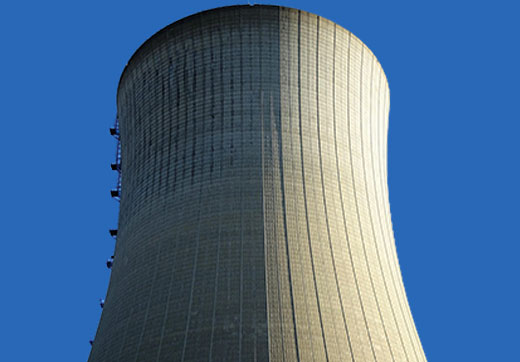
Graphite in Nuclear Energy: What You Need to Know
When most people think of nuclear power, they picture uranium fuel rods and massive cooling towers. But there's another material quietly performing important work inside many nuclear reactors: graphite. This form of carbon plays several roles in nuclear energy production such as controlling nuclear reactions and providing structural support in the world's most advanced nuclear power stations, like the Davis-Besse Nuclear Power Station just west of Lorain, OH on Lake Erie. And with President Trump’s recent executive orders on nuclear power, it is likely that this industry will grow in significance as the US looks to increase its energy output to meet increasing demand. As we wrote about earlier this year, where there is clean energy production, from solar panels to hydrogen cells, graphite is sure to play a significant role in the technology.
The Moderator's Job
Inside a nuclear reactor, uranium atoms split apart in a process called fission, releasing enormous amounts of energy along with fast-moving neutrons. These neutrons must be slowed down to sustain the nuclear chain reaction that generates power. This is where graphite steps in as a moderator.
Graphite's unique properties make it well-suited for this job. Its low atomic mass allows it to effectively scatter and slow down neutrons without absorbing too many of them—a critical balance in a nuclear chain reaction. When fast neutrons collide with carbon atoms in the graphite, they bounce around and gradually lose speed, much like billiard balls colliding on a table. These slower neutrons are much more likely to cause additional uranium atoms to split, keeping the chain reaction going at a controlled pace.
Without an effective moderator like graphite, maintaining a steady nuclear reaction becomes nearly impossible. The neutrons would move too quickly to efficiently trigger additional fission events, and the reaction would sputter out.
Reflector and Structure
Graphite's usefulness in nuclear reactors extends beyond slowing neutrons. Many reactor designs use graphite as a reflector, strategically placed around the reactor core to bounce escaping neutrons back into the active area. This prevents neutrons from being lost and ensures they contribute to power generation instead of disappearing into the reactor's shielding.
In some advanced reactor designs, graphite also serves as a structural material. Its ability to withstand extreme temperatures and radiation makes it valuable for components that must maintain their integrity under harsh nuclear conditions. Unlike many materials that become brittle or degrade when exposed to intense radiation, properly manufactured nuclear-grade synthetic graphite can maintain its structural properties for years.
High-Temperature Gas-Cooled Reactors
Perhaps nowhere is graphite more important than in high-temperature gas-cooled reactors (HTRs). These advanced reactor designs represent some of the most promising developments in nuclear technology, capable of operating at much higher temperatures than traditional water-cooled reactors.
In HTRs, graphite performs triple duty. It serves simultaneously as moderator, reflector, and structural material. The reactor core consists largely of graphite blocks containing uranium fuel, with helium gas flowing through channels to remove heat. This design allows HTRs to reach temperatures exceeding 1,600°F while maintaining safe operation.
The high operating temperatures of HTRs make them particularly attractive for industrial applications beyond electricity generation. They can provide high-temperature process heat for hydrogen production, chemical processing, and steel manufacturing—applications that traditional nuclear reactors cannot support. Graphite is already used in steel production as an electrode material in electric arc furnaces that produce extremely high heat. With HTRs, graphite continues its importance in the growing steel industry.
Nuclear-Grade Requirements
Not just any graphite will work in nuclear applications. Nuclear-grade graphite must meet extraordinarily strict specifications for purity, density, and structural integrity. Even tiny impurities can absorb neutrons and interfere with reactor operation. The manufacturing process for nuclear graphite involves careful selection of raw materials and precise control of processing conditions to achieve the required properties.
At Semco Carbon, while we don't manufacture nuclear-grade graphite, we appreciate the exacting standards required for nuclear applications. Our experience with precision graphite machining gives us insight into the importance of material quality and consistency in demanding applications.
The Future of Graphite in Nuclear Energy
As the nuclear industry develops next-generation reactor designs, graphite continues its central role. Advanced reactors under development rely heavily on graphite components. This versatile material is essential to nuclear energy's future. From small modular reactors to molten salt designs, graphite's unique combination of structural and thermal properties ensures its place in tomorrow's nuclear technology.
